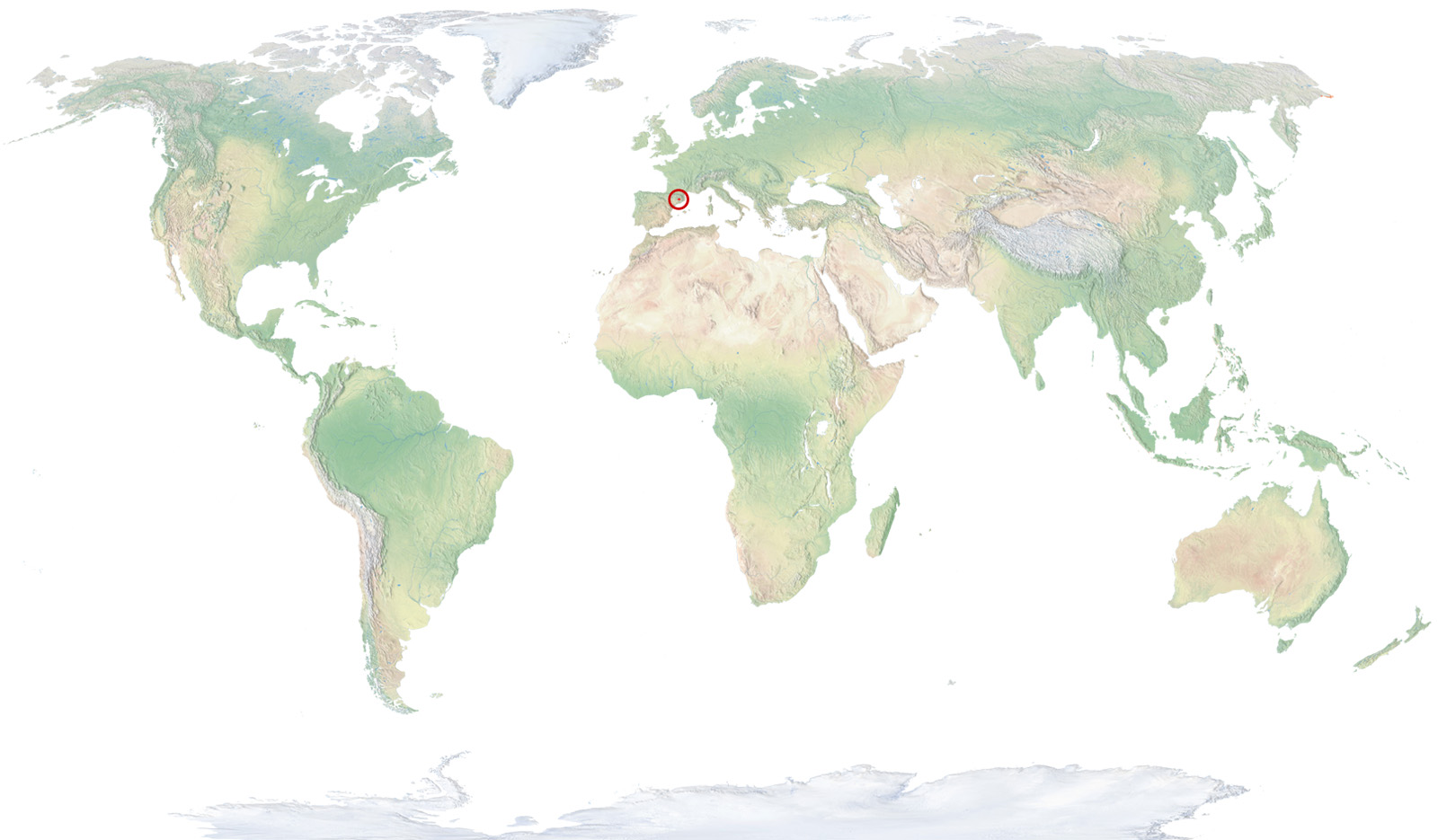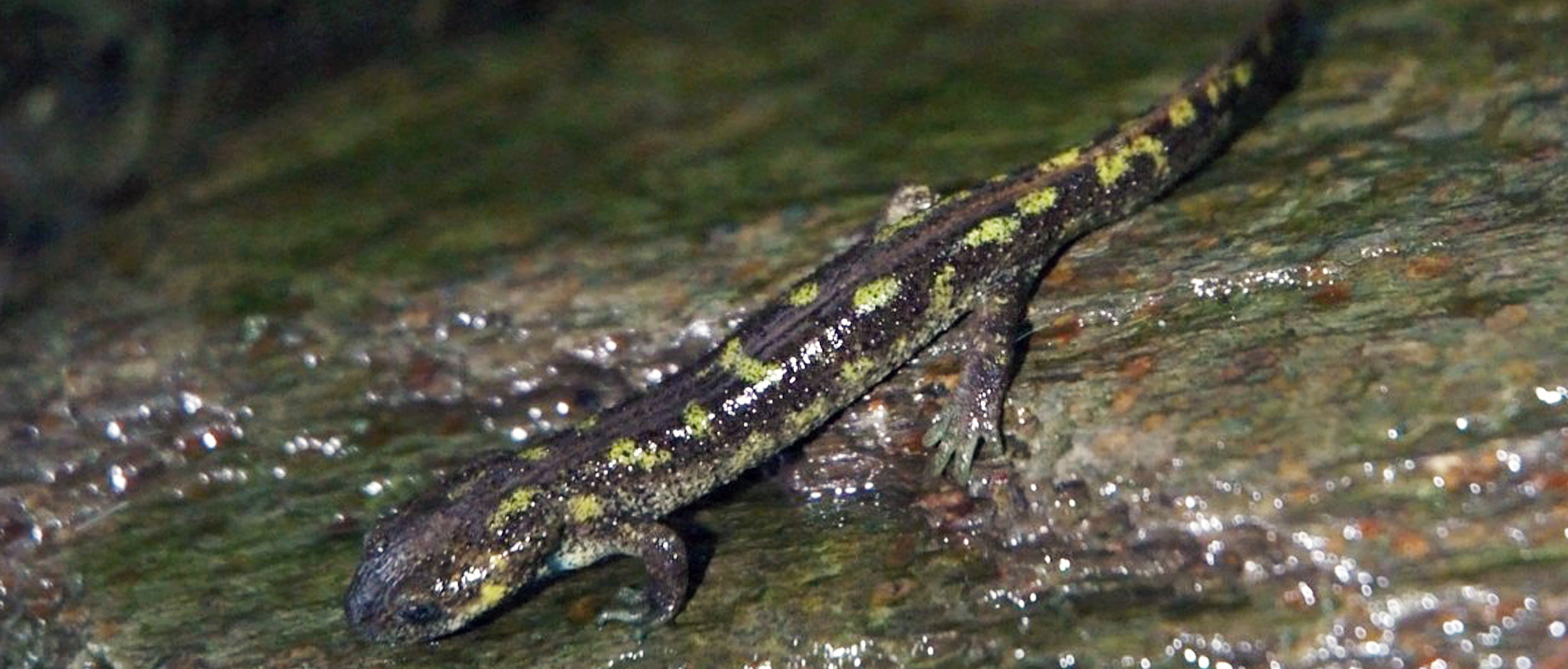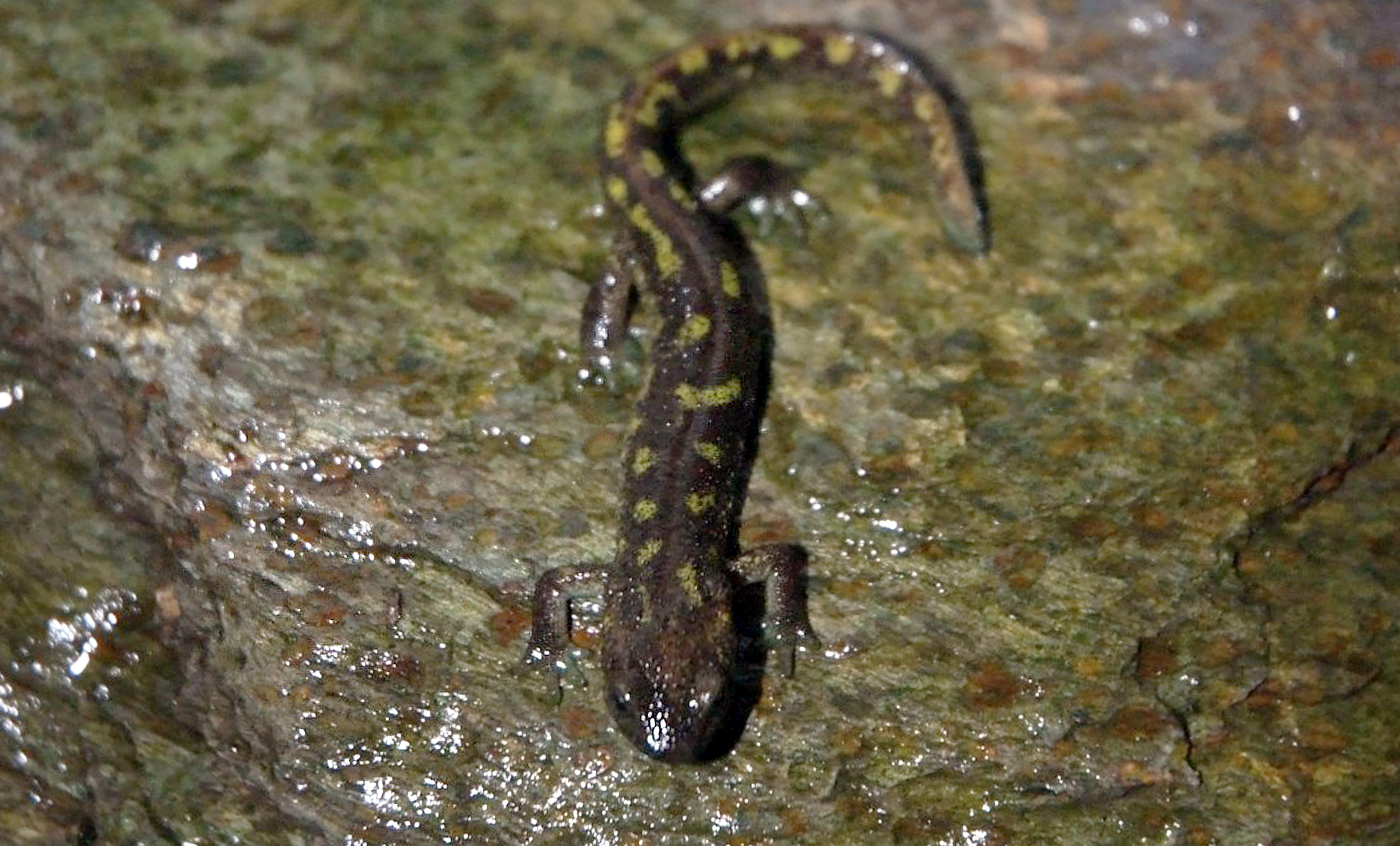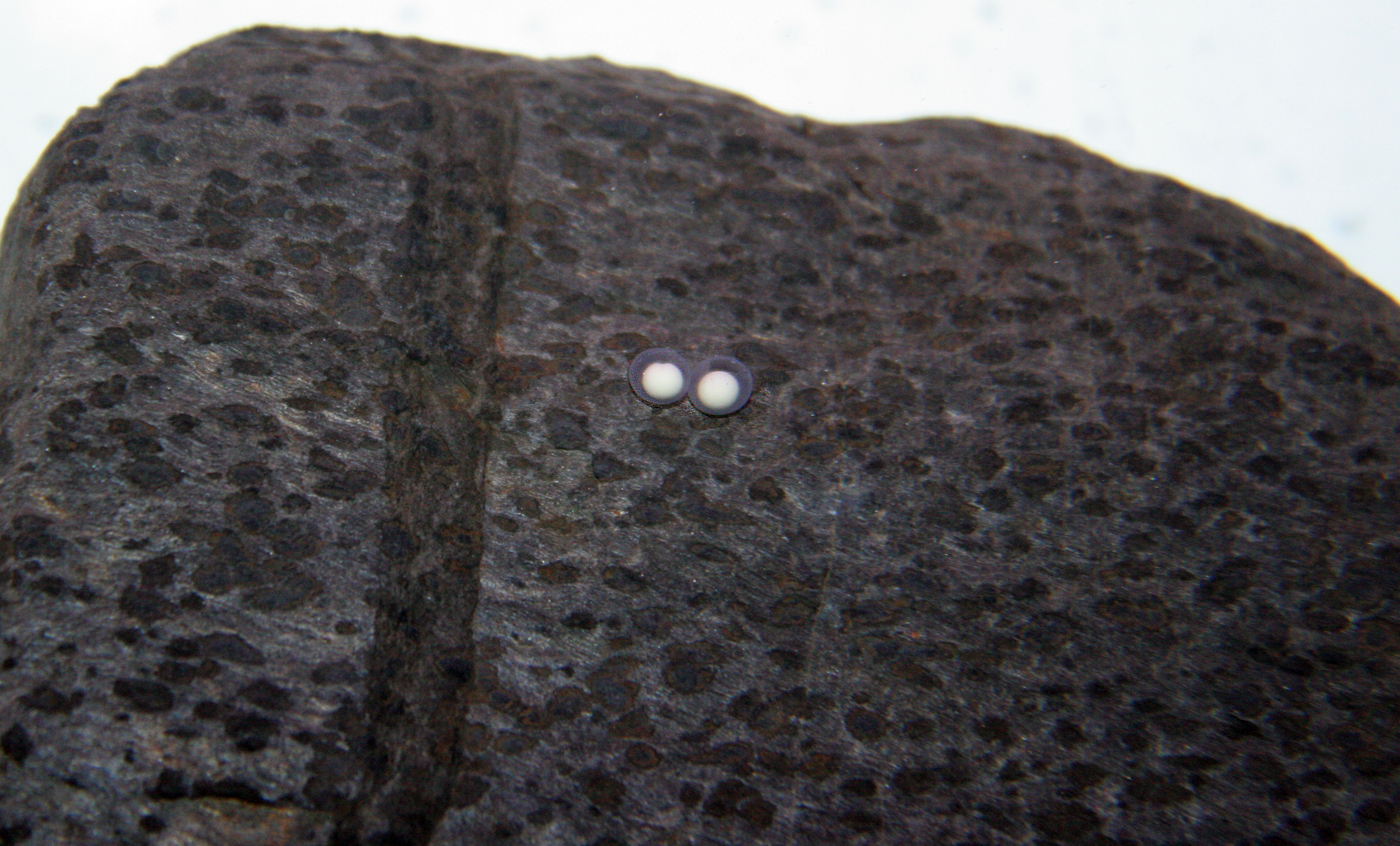Montseny brook newt
The Montseny brook is an amphibian species from the Montseny that can only be found in this Catalan Massif, in a very small distribution area of only 25 km2, and it is the only vertebrate endemic to Catalonia. It has only been spotted in seven streams, distributed in two populations, which are four kilometres from each other.
It is estimated that during the last ten years its population has decreased 15%, which has led the International Union for Conservation of Nature and Natural Resources to list it as Critically Endangered (CR) on their red list.
Natural habit
It lives in mountain streams of cold highly-oxygenated waters, preferably in beech and oak forests, between 600 and 1,200 metres of altitude.

- Distribution / Resident
- Breeding
- Wintering
- Subspecies
Risk level
- Extint
- Extint in the wild
- Critically endangered
- In Danger
- Vulnerable
- Near threatened
- Minor concern
- Insufficient data
- Not evaluated
Taxonomy
Physical characteristics
Biology
Reproduction
Biology
Its length does not exceed 11 centimetres and has a brownish hue on the back, with small yellow spots on the tail sides, as well as cream coloured underparts. Its sexual dimorphism is low: males have slightly bigger and wider heads than females and their tail is shorter and higher. The main difference is in the cloaca, where females have a slightly prominent and round protuberance.
It lives in mountain streams of cold highly-oxygenated waters, preferably in beech and oak forests, between 600 and 1,200 metres of altitude.
It feeds on aquatic invertebrates and salamander larvae.
Oviparous, reproducing in the spring and fall. Eggs of this species have never been spotted in the wild, but it is believed that females leave them under rocks, to prevent them being dragged by currents. In captivity, they lay up to forty eggs per year, with an incubation period between one month and one month and a half. They are born as a whitish minuscule larva and they slowly acquire their adult shape. Young newts’ appearance is the same as in adults, albeit smaller, with completely smooth skin and with gills.
Mountain brook has developed some very particular adaptations to live in cold streams with strong currents. The main ones are: its flattened body that enables it to easily enter crevices; the lack of dorsal crest; its granular skin and its chitinous parts on the tip of its fingers, which lets it have a strong grip on crevices and on the bottom of the streams. Its small lungs help him remain underwater.
Unlike its Pyrenean counterpart, the young newts do not seem to leave the water and adopt ground-dwelling habits. It shares its habitat with two other amphibians: the fire salamander and the common midwife toad.
Although the existence of a newt population in Montseny has been known since the 80s, at the times this was initially identified as Pyrenean newts, a common species in many parts of our country, and it was not until 2005 when it was proved that, due to their isolation, both species evolved independently.
It is estimated that during the last ten years its population has decreased 15%, which has led the International Union for Conservation of Nature and Natural Resources to list it as Critically Endangered (CR) on this organization’s red list. It has also been protected by Spanish and Catalan laws, where it is also considered to be a critically endangered species. It is, without a doubt, one of the most endangered amphibians in Europe.
The survival of this species is closely linked to the preservation of aquatic environments, but also to the vast forests surrounding them. Natural disasters, such as fires caused by lightening or floods caused by torrential rainfall, may lead to local extinctions of newt populations, but it is human intervention which is endangering the survival of the species.
Since 2006, Barcelona Provincial Council and the Catalan Government have co-funded the Montseny brook newt conservation project, in the scope of the Montseny Natural Park, which is aimed at ensuring the survival of this threatened vertebrate.
On 2007, twenty adult specimens were taken to the Torreferrussa Wild Fauna Recovery Centre to start a pilot programme and evaluate the feasibility of their reproduction in captivity. It should be noted that this is a species that had never been bred before, so the centre had make a great effort, in terms of both research and investment, to push the project forward. The specimens adapted very well, as reported a year later when the reproductive cycle ended with a high number of eggs. The growth of the larvae during the first two years was very encouraging, once the critical initial period had been overcome, which enabled us to have a reserve of over 400 juveniles and to start releasing them into the wild on 2010.
However, a single population is not enough to ensure the future of the species, should a critical situation arise. Along these lines, the Zoo of Barcelona started collaborating in the recovery plan of the Montseny brook newt, by breeding the species at its facilities.
On 2016, a LIFE project for the conservation of the Montseny brook newt has been started and the Zoo of Barcelona takes part in it, with the construction of a second facility for the reproduction of this endangered species.





